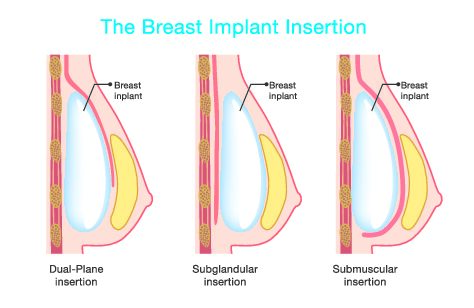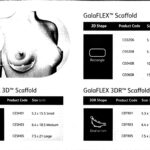How to Choose your Breast Augmentation (Breast Enlargement) implants insertion pocket?
Breast augmentation can be performed with implants placed either under the pectoral muscle (submuscular) Dual plane or over it (subglandular, subfascial), each approach having its advantages and considerations.
Submuscular (Under the Muscle) Dual Plane Placement
- Advantages:
- Provides a more natural appearance, particularly in thinner patients with less natural breast tissue.
- Reduces the risk of visible implant edges and rippling.
- Decreases the risk of capsular contracture (scar tissue hardening around the implant) compared to subglandular placement (McCarthy et al., 2016).
- Offers better long-term support due to muscle coverage, potentially reducing sagging over time.
- Disadvantages:
- More painful recovery due to muscle stretching.
- Possible animation deformity—movement of the implant with muscle contraction.
- Slightly longer recovery time compared to subglandular placement.
Subglandular/Subfascial (Over the Muscle) Placement
- Advantages:
- Less postoperative pain and quicker recovery.
- No risk of animation deformity since the implant is not affected by muscle contractions.
- More suitable for patients with sufficient breast tissue to cover the implant (Adams et al., 2017).
- Disadvantages:
- Higher risk of capsular contracture.
- More prone to implant visibility and rippling, especially in thinner patients (Tebbetts, 2001).
- Implants may be more affected by gravity over time, potentially leading to sagging.
The choice between submuscular/dual plane (under muscle) and subglandular/subfascial (over the muscle) breast implant placement depends on several factors, including body type, lifestyle, and aesthetic goals. Here’s a general recommendation based on different body types and preferences:
- Thin or Petite Women (Low Body Fat, Small Natural Breast Tissue)
Best option: Submuscular placement
- Thinner patients tend to have less natural breast tissue, so placing implants under the muscle helps provide more coverage.
- Reduces the risk of implant visibility and rippling.
- Creates a more natural slope to the upper breast.
- Women with Moderate to Large Natural Breast Tissue
Best option: Subglandular placement (if they have sufficient tissue)
- If a patient has enough natural breast tissue, the implant can be placed above the muscle without appearing unnatural.
- Provides more fullness in the upper pole of the breast.
- Women with Athletic or Highly Active Lifestyles (Weightlifters, Bodybuilders, Swimmers, etc.)
Best option: Subglandular placement
- Submuscular placement can cause “animation deformity” (implant movement during muscle contraction).
- Over-the-muscle placement avoids this issue, allowing for a more stable appearance.
- Women Concerned About Capsular Contracture Risk
Best option: Submuscular placement
- Studies suggest that implants placed under the muscle have a lower risk of capsular contracture (McCarthy et al., 2016).
- The muscle provides an additional protective layer, reducing inflammation.
- Women Seeking Faster Recovery & Less Postoperative Pain
Best option: Subglandular placement
- Over-the-muscle implants typically result in less pain and a shorter recovery time because the chest muscle remains untouched.
- Ideal for women who need to return to daily activities quickly.
- Women Concerned About Long-Term Sagging
Best option: Submuscular placement
- Submuscular placement provides additional support from the pectoral muscle, potentially delaying sagging over time (Adams et al., 2017).
Final Thoughts
- If you are thin with little breast tissue → consider submuscular/dual plane for a natural look.
- If you are active (weightlifter, athlete) → Consider subglandular to avoid implant movement.
- If you have a good amount of natural breast tissue → Subglandular/subfascial can provide a fuller upper breast.
- If you wish a tighter cleavage, go subglandular/subfascial.
- Discuss all options with your Breast Augment Surgeon as he/she will help you guide through the choice that suits you best.
Scientific References
- McCarthy, C. M., Pusic, A. L., Disa, J. J., Mehrara, B. J., & Cordeiro, P. G. (2016). The Evolution of Breast Augmentation: Implications for Surgical Practice and Education. Plastic and Reconstructive Surgery, 137(3), 481e-490e.
- Adams, W. P., Teitelbaum, S., & Jewell, M. L. (2017). Breast Augmentation: A Comprehensive Approach. Aesthetic Surgery Journal, 37(3), 257-270.
- Tebbetts, J. B. (2001). Does Fascia Provide Additional Support for Breast Implants? Plastic and Reconstructive Surgery, 107(1), 204-212.
- lfile:///Users/alijuma/Downloads/handout%205%20(1).pdf










